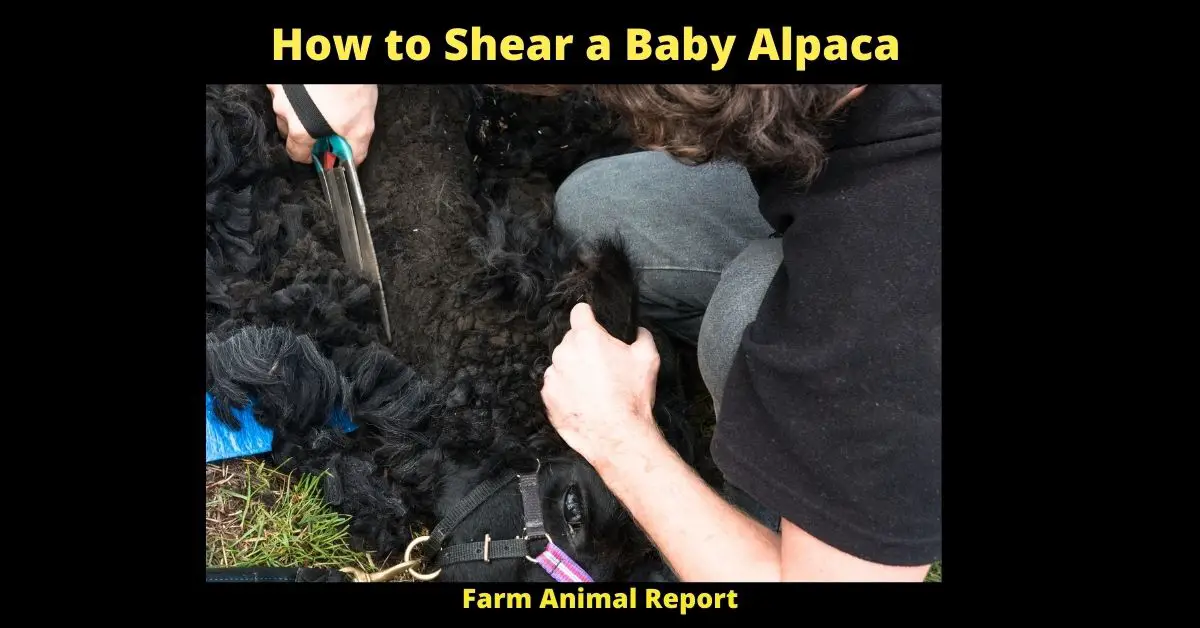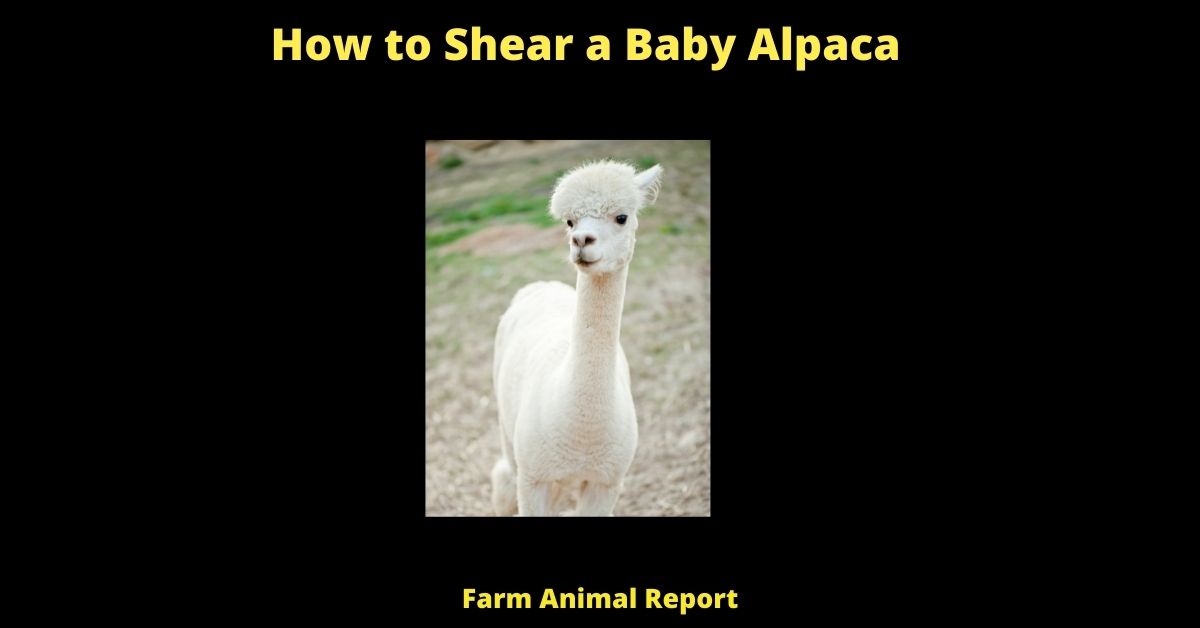As a general rule baby alpacas need to be sheared for grooming, to help them stay cool in summer. Best for having an assistant to help hold the alpaca. Electric or manual shears can be used. They can be sheared at about 5 months. Best to do it in spring this keeps them cool in the heat of summer and gives it time for regrowth to keep them warm in winter.
How to Shear a Baby Alpaca?
Shearing is a process that most alpaca ranchers do annually. It can be done at any time of the year, but it is traditionally performed in the spring or fall when temperatures are cooler. Shearing helps to remove dead and loose undercoat hairs from your alpacas during this process. The best way to shear an alpaca is by using clippers designed specifically for animal use with a long blade (rather than scissors). This will help to eliminate any snagging on their skin.
How to Shear a Baby Alpaca? – Alpacas are very gentle creatures. They can be sheared using a variety of tools, including the basic ones like scissors and hand-shearing razors or more advanced electric shears. However, it is best to start with the simplest method possible – manual scissoring. This way you will get used to what alpaca wool looks like.

Tools you will need include:
Scissors and/or hand shearing razors
You will need help, so ask a friend or family member if you don’t know anyone that can assist.*
After restraining your pet properly, start shearing from behind while making sure that you leave a tuft of fur on its back to protect it from the sun. Then, move on to shearing the legs and belly while holding down or tying up any loose hair that might get in your way.
Use small scissors (which are more precise than large ones) when cutting off thick clumps of wool since they will make it easier to get close to the skin. It is also recommended that you use thinning shears, which are designed specifically for this purpose in order to avoid snagging and damaging your alpaca’s sensitive coat.
When cutting off thick clumps of wool, make sure not to pull them out since doing so will only hurt your animal. Instead, cut them off slowly but surely.
When shearing the belly and legs of your alpaca, make sure that you leave tufts on its back to protect it from sunburns. you can tie up any loose hair that might get in your way as well as thinning shears to avoid snagging and damaging your alpaca’s sensitive coat.
Once you are done with the front, move on to its back (which is harder to reach) while using small scissors in order to cut off thick clumps of wool instead of pulling them out since this will only cause harm. Then, finish it all off with its sides and legs.
Once you are done shearing your alpaca, untie it carefully since this will alleviate some of the discomforts that might have been caused by being restrained for so long. Then brush through all of its wool in order to remove any leftover clumps or dirt before taking a break for about two weeks during which its coat will grow back to its original thickness.
If you are shearing an adult alpaca, make sure that it is not pregnant or lactating since this might cause harm to the animal and its unborn baby/infant. Besides, be extra careful when using electric shears since they can accidentally cut through your pet’s skin which can result in a serious injury.
If you are shearing an adult alpaca, make sure that it is not pregnant or lactating since this might cause harm to the animal and its unborn baby/infant. Make sure to untie your pet carefully once done with the process so as to relieve some of the discomfort caused by being restrained for so long. You can also use electric shears but be extra careful since they might accidentally cut through your alpaca’s skin which can result in a serious injury.
Why you Should Shear your Alpacas?
Your alpacas will look great. Their coats are naturally shiny and soft after shearing, so they’ll be luxurious to touch as well!
Your alpacas will be cooler. Because their coats are so thick, they can get quite hot during the summer months. Shearing them allows air to reach their skin and cools them down quickly after a hard day of cuddling with you!
Your alpacas will be less likely to suffer from sunburn. Sunburn is a common problem for many animals, including your adorable alpaca! However, after shearing their coats they are less exposed and at risk of getting burnt.
Your alpacas will be less likely to get parasites. Alpaca fleece is so thick and dense, it doesn’t allow breathability for ticks or other insects that might want to set up home on your animals!
Your alpacas will be happier. Alpaca fleece is naturally hypoallergenic, so it’s great for people with sensitivities to other types of animals fur!
Your alpacas will live longer. One problem that can occur in older alpacas is flystrike – when flies lay their eggs on the animal’s skin, which can lead to them burrowing into the alpaca’s flesh and causing infections. Shearing your animals reduces their risk of flystrike!
Your alpacas will produce more fiber. Alpaca fleece is considered one of the finest fabrics in the world – it has a very high cashmere content, with an average micron count of around 12 (cashmere is usually 18-22!)
Your alpacas will be more valuable. Alpaca fleece can sell for up to $20 per ounce – so shearing your animals could increase their value by around $1000!
You should consider shearing your baby alpacas especially if you’re planning to show them. Show alpacas must be clean and well-groomed, so shearing your animals is a great way to get it done quickly!

When is the Best time to Shear an Alpaca?
- Shearing is usually done in the winter so as not to interfere with their insulation during the colder months.
- Shearing is best done when the alpaca’s coat is at its longest to ensure that all of their fibers are sheared.
- The longer an animal’s fiber, the more it will be worth once it has been spun and woven into yarn.
- When fiber is shorter, it will be coarser and less soft.
- Fiber does not grow continuously like human hair but instead in three- to five-month cycles.
- As a result, it can be harvested every three to five months without damaging the health of the alpaca.
Jump to Newborn Alpacas-Baby Alpacas-Extensive Guide
Final Thoughts
In summary, alpaca shearing is a very important part of animal husbandry. Without it, your pet will be uncomfortable and have difficulty producing valuable fiber to sell!

